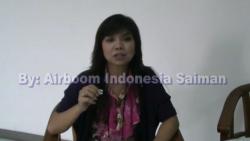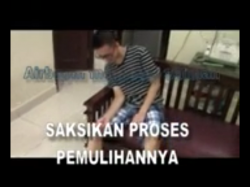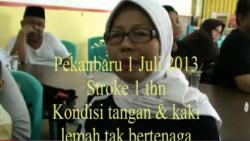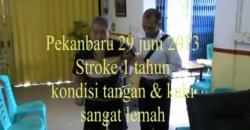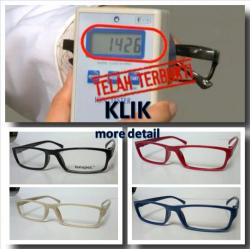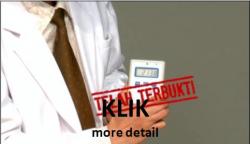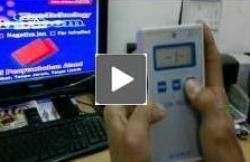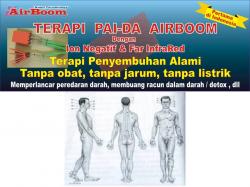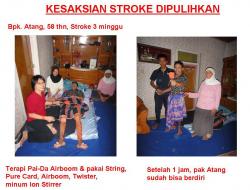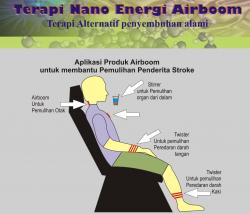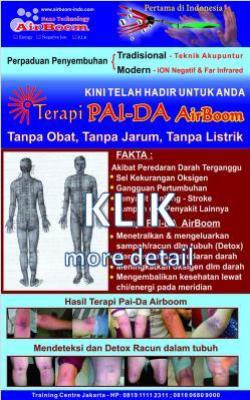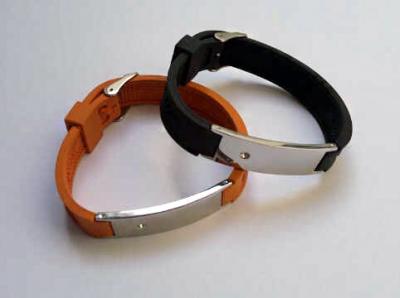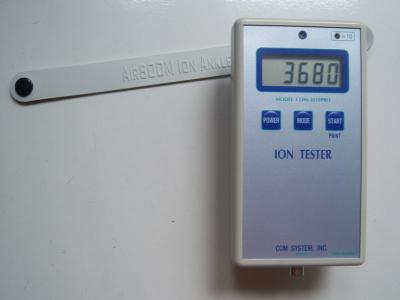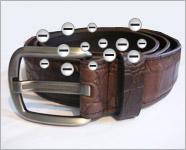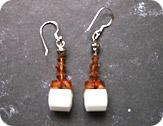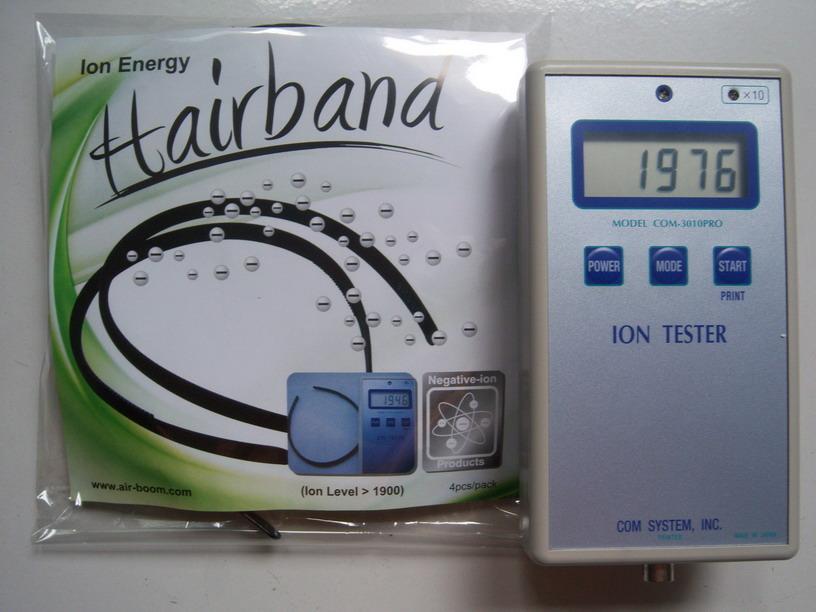Home »
Produk Airboom »
Ion Glass05 - Adult (Frame Kacamata Ion Model 5 dewasa Brown & Silver)
Ion Glass05 - Adult (Frame Kacamata Ion Model 5 dewasa Brown & Silver)
Rp 1.080.000,00

|
Fungsi dari kacamata Ion : 1. Memperlancar peredaran darah, mengurangi migrain 2. Mengaktifkan sistem syaraf 3. Mensuplai lebih banyak oksigen untuk mata 4. Membantu untuk mengurangi mata lelah, warna hitam dan keriput di sekitar mata. 5. Mengatasi masalah katarak & glukoma.
 To promote blood circulation, metabolism, improve and avoid eye diseases such as; dry eye, glaucoma, cataract, retinal disease, lachrymal tract disease and other common eye diseases caused by hypoxia. To promote blood circulation, metabolism, improve and avoid eye diseases such as; dry eye, glaucoma, cataract, retinal disease, lachrymal tract disease and other common eye diseases caused by hypoxia.Most people will experience some eye trouble at one time or another. Eyes can be tired, dry, bloodshot, infected or itchy to name a few conditions. Call or see an eye care professional for any of these problems that last more than a day or two. |
||||||
| Conjunctivitis (Sometimes Called “Pinkeye”) | ||||||
 Conjunctivitis is an inflammation of the conjunctiva, the membrane that lines the eyelid and wraps around to cover most of the white of the eye. The eyes will appear bloodshot and tearing, sometimes swollen. They often itch and are irritated. The infected membrane is filled with pus so the eyelids may stick together after being closed for a while (like while you are sleeping). Carefully splash them with some cool water to loosen any "gunk" so you can open them. Conjunctivitis is an inflammation of the conjunctiva, the membrane that lines the eyelid and wraps around to cover most of the white of the eye. The eyes will appear bloodshot and tearing, sometimes swollen. They often itch and are irritated. The infected membrane is filled with pus so the eyelids may stick together after being closed for a while (like while you are sleeping). Carefully splash them with some cool water to loosen any "gunk" so you can open them.This condition can be caused by allergies, bacterial infection, viral infection, makeup, contact lens solutions or another physical irritant. Conjunctivitis is VERY contagious if it is caused by a viral infection. It may start in one eye and then spread to the other. Be careful after washing and drying your face -- don't let anyone else use that towel, as it is contagious. It often spreads from one family member to another. Make sure you wash your hands after touching or rubbing your eyes. Conjunctivitis that is associated with hay fever (allergies) may be treated with prescription eye drops. It is not contagious and is often worse in the morning. Let your health care provider know you are having this problem, there are OTC and prescription eye drops that may lessen your symptoms. If you think you have viral or bacterial conjunctivitis call your eye doctor or health care provider. Sometimes with viral conjunctivitis no prescription is given, as it has to just run its course. But if it is very uncomfortable your health care provider may prescribe eye drops to make you more comfortable. Bacterial conjunctivitis can be treated with prescription eye drops. |
||||||
| Corneal Ulcer | ||||||
|
If the cornea (the membrane that covers the front of the eye) is damaged, the eye becomes inflamed and often very sensitive to light. Damage may occur as a result of an injury, often you get a scratch on your eye from a foreign object or from something else like if you walk through some tall bushes and get scratched in the eye by a branch. Or, if you fall in some dirt while rollerblading or cycling and your eye gets scratched by a pebble. Call your health care provider right away if you do get a scratch like this on the surface of the eyeball. An infection can occur from the ulceration. You will be given prescription eye drops and sometimes oral medication to prevent infection. The eye can heal very quickly, but you must seek attention quickly with this kind of injury. |
||||||
| Eyestrain | ||||||
Eyestrain causes a dull, aching sensation around and behind the eyes that can progress into a generalized headache. It may feel painful or fatiguing to focus the eyes. Eyestrain is commonly a result of overuse of the eyes for activities requiring close and precise focus, such as reading, embroidering, sewing or using the computer! This has become a common problem for people who work or surf the net often. Its important to look away from the screen from time to time and buy one of those UVA filters for you computer, it really helped my eye strain! What to do? Lie down, close your eyes, place a cold compress (cold, clean, wash cloth is fine) over your eyes. Relax your eyes for at least ten minutes. Try to avoid eyestrain by taking periodic "focus breaks". About every twenty minutes try to look away from your work and focus on something in the distance for a minute or two. ALSO... get enough sleep, your eyes will get eyestrain easier if you are very tired. If you have severe pain with blurred vision, call an eye care professional or other professional help at once. |
||||||
| Sty | ||||||
|
A sty is a bacterial infection within an oil gland on the edge of the eyelid. The sty takes on the appearance of a small pimple from being inflamed. This pimple will gradually come to a head, open and drain. Early treatment helps the sty to heal faster and prevents any complications. They are very common in children and teens who often rub their eyes with dirty hands. What to do? Apply a hot compress to the area for about ten minutes to help relieve discomfort and bring the sty to a head so that it can drain and then healing can begin. In stubborn cases you may need to be treated with antibiotics, call your health care provider for further instructions or to see if he or she wants to prescribe an antibiotic for you. |
||||||
| Serious Eye Problems | ||||||
|
Detachment Of The Retina -- Serious Stuff Detachment of the retina usually occurs from trauma to the head. This means trauma is usually a blow to the head, or if you fall off you bike and bump your head, or even bump your head hard enough on something at home. If you experience ANY distorted vision, see flashes of light or any vision loss after a blow to the head, get medical attention as soon as possible! There is no pain with a detached retina; just light flashes, vision loss or distortion. A detached retina usually requires surgical reattachment, otherwise you can have permanent blindness! This is often why professional boxers have to retire. After the many blows they take to the face and the head, they often have detached retinas and risk blindness if they continue to fight after surgery. |
||||||
|
Aging and Your Eyes Did you know that many older people have good eyesight into their 80's and beyond? Growing older does not always mean you see poorly. But age brings changes that can weaken your eyes. There are some easy things to try when these changes happen. You might add brighter lights in more places around the house--like at work counters, stairways, and favorite reading places. This may help you see better and can sometimes prevent accidents caused by weak eyesight. While older people have more eye problems and eye diseases than younger people, you can prevent or correct many of them by: |
||||||
|
||||||
| Common Eye Complaints | ||||||
|
Presbyopia (prez-bee-OH-pee-uh) is a slow loss of ability to see close objects or small print. It is a normal process that happens over a lifetime. You may not notice any change until after the age of 40. People with presbyopia often hold reading materials at arm's length. Some get headaches or "tired eyes" while reading or doing other close work. Presbyopia is often corrected with reading glasses. Floaters are tiny spots or specks that float across the field of vision. Most people notice them in well-lit rooms or outdoors on a bright day. Floaters often are normal, but sometimes they warn of eye problems such as retinal detachment, especially if they happen with light flashes. If you notice a sudden change in the type or number of spots or flashes, see your eye doctor. Dry eyes happen when tear glands don't make enough tears or make poor quality tears. Dry tears can be uncomfortable, causing itching, burning, or even some loss of vision. Your eye doctor may suggest using a humidifier in the home or special eye drops ("artificial tears"). Surgery may be needed for more serious cases of dry eyes. Tearing having too many tears can come from being sensitive to light, wind, or temperature changes. Protecting your eyes (by wearing sunglasses, for instance) sometimes solves the problem. Tearing may also mean that you have a more serious problem, such as an eye infection or a blocked tear duct. Your eye doctor can treat or correct both of these conditions. |
||||||
| Eye Diseases and Disorders Common in Older People | ||||||
|
Cataracts are cloudy areas in part or all of the eye lens. The lens is usually clear and lets light through. Cataracts keep light from easily passing through the lens, and this causes loss of eyesight. Cataracts often form slowly and cause no pain, redness, or tearing in the eye. Some stay small and don't change eyesight very much. If a cataract becomes large or thick, it usually can be removed by surgery. During surgery, the doctor takes off the clouded lens and, in most cases, puts in a clear, plastic lens. Cataract surgery is very safe. It is one of the most common surgeries done in the United States. Glaucoma results from too much fluid pressure inside the eye. It can lead to vision loss and blindness. The cause of glaucoma is unknown. If treated early, glaucoma often can be controlled and blindness prevented. To find glaucoma, the eye doctor will look at your eyes through dilated pupils. Treatment may be prescription eye drops, oral medications, or surgery. Most people with glaucoma have no early symptoms or pain from increased pressure. Retinal disorders are a leading cause of blindness in the United States. The retina is a thin lining on the back of the eye. It is made up of cells that get visual images and pass them on to the brain. Retinal disorders include age-related macular degeneration, diabetic retinopathy, and retinal detachment. |
||||||
|
||||||
|
Conjunctivitis happens when the tissue that lines the eyelids and covers the cornea becomes inflamed. It can cause itching, burning, tearing, or a feeling of something in the eye. Conjunctivitis can be caused by infection or allergies. Corneal diseases and conditions can cause redness, watery eyes, pain, reduced vision, or a halo effect. The cornea is the clear, dome-shaped "window" at the front of the eye. It helps to focus light that enters the eye. Disease, infection, injury, toxic agents, and other things can damage the cornea. Treatments include changing the eyeglass prescription, eye drops, or surgery. Corneal transplantation is used to restore eyesight when the cornea has been hurt by injury or disease. An eye surgeon replaces the scarred cornea with a healthy cornea donated from another person. Corneal transplantation is a common treatment that is safe and successful. The doctor may prescribe eyeglasses or contact lenses after surgery. Eyelid problems can come from different diseases or conditions. The eyelids protect the eye, distribute tears, and limit the amount of light entering the eye. Pain, itching, tearing and sensitivity to light are common eyelid symptoms. Other problems may include drooping eyelids (ptosis), blinking spasms (blepharospasm), or inflamed outer edges of the eyelids near the eyelashes (blepharitis). Eyelid problems often can be treated with medication or surgery. Temporal arteritis Causes the arteries in the temple area of the forehead to become swollen. It can begin with a severe headache, pain when chewing, and tenderness in the temple area. It may be followed in a few weeks by sudden vision loss. Other symptoms can include shaking, weight loss, and low-grade fever. Scientists don't know the cause of temporal arteritis, but they think it may be a disorder of the immune system. Early treatment with medication can help prevent vision loss in one or both eyes. |
||||||
| Low Vision Aids | ||||||
| Many people with eyesight problems find low vision aids helpful. These are special devices that are stronger than regular eyeglasses. Low vision aids include telescopic glasses, lenses that filter light, and magnifying glasses. Also, there are some useful electronic devices that you can either hold in your hand or put directly on your reading material. People with only partial sight often make surprising improvements using these aids. |
AirBoom iON Wristband03...
Rp. 600,000Ion Pure Card ( Bubuk I...
Rp. 5,000,000Ion Energy Ankle Band ...
Rp. 420,000Ion Nano String ( Kabel...
Rp. 2,808,000Ion Belt Jeans Brown ( ...
Rp. 1,404,000Ion Twister Thin Pack (...
Rp. 875,000Ion Crystal Earring ( A...
Rp. 486,000Ion Energy Hair Band ( ...
Rp. 720,000


